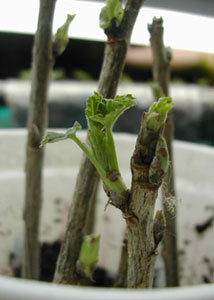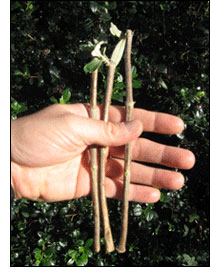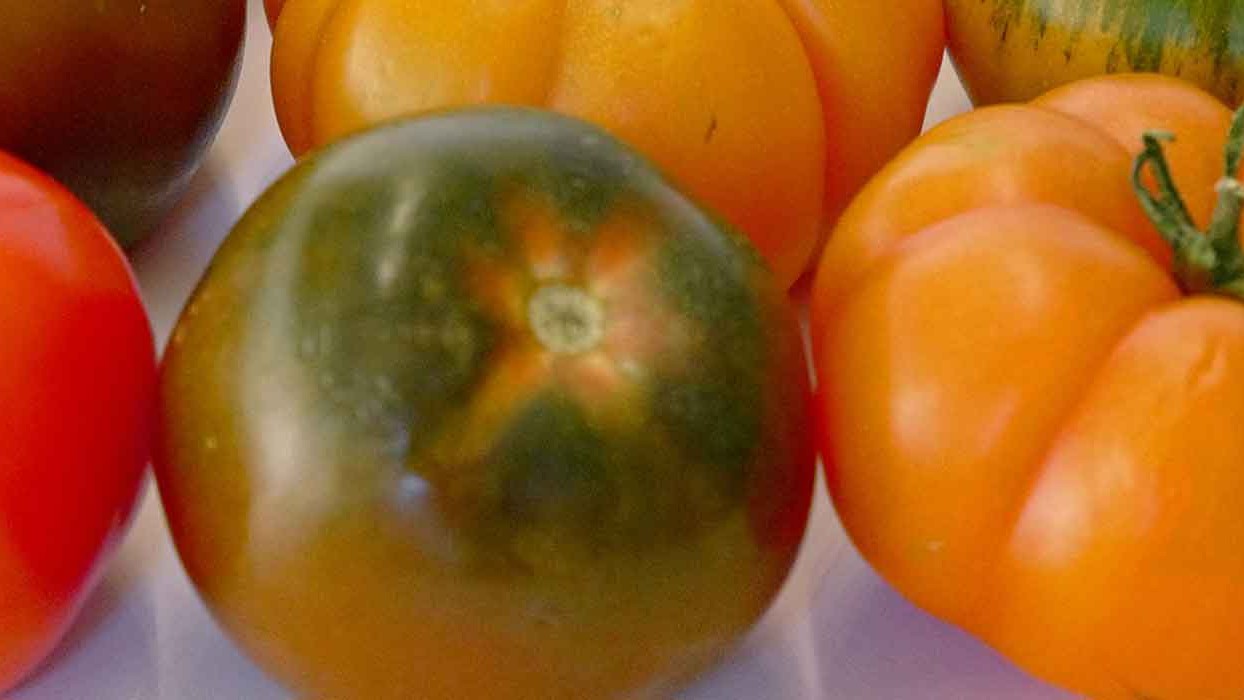
A cutting is a piece of stem, a leaf, or root that develops roots when placed in suitable medium and in the right conditions.
It’s very satisfying as a gardener to gently knock the potting media from a cutting after waiting and caring for it for weeks or months, and seeing a nice group of fat white roots.
Not that all cuttings need that much care or that much waiting – it just depends on the species of plant.
Hardwood cuttings are about the most carefree of all. Hardwood cuttings are pieces of stem from deciduous shrubs or trees taken during winter when the plant is dormant. The stems are very firm.
Softwood cuttings are those taken from young growing stems and, because these are prone to wilting and drying out rapidly, they need a lot of care, often with misting systems.
Semi-hardwood cuttings are taken later in the growing season, when the new growth has firmed up a bit.

Taking Cuttings
Hardwood cuttings are pieces of stem that are up to 20cm long and between 5 and 20mm in diameter. There should be four to six nodes on each piece – as can be seen here.
The only point to watch is that you don’t pop them in the media upside down! For pieces of stem where the direction of the buds is not visible this can be an easy mistake. When taking the cutting, make a slanting cut at the bottom just below the last node and a straight cut about 6 to 12mm above the top node.
Hormone treatments that promote root development are available from garden centres, either in powder or liquid form. Hardwood cuttings often don’t need root promoting hormone treatments. In fact some hardwood cuttings will sprout roots when simply pushed into the ground. Weedy plants such as willows and poplars can do this.
Always ensure the cuttings are potted up as soon as they are taken. Dip the bottom in rooting hormone, if necessary, make a hole with a pencil or dibble – about 5cm deep, and carefully place the cutting in the hole – about one-third of their length – and firm the mix around it.
And hardwood cuttings often don’t need special conditions, just a protected spot in the garden, where there is light but not direct sunlight. However, cuttings will strike better with some warmth. A simple frame covered in clear plastic or even a plastic bag over a pot will provide more heat and humidity.
Propagating media or seed raising mix is suitable for hardwood cuttings. These can be bought from garden centres, but you can also make your own. Mix two parts of coarse sand and one part of premixed coco peat or vermiculite, or, if you need a mix that holds more water, try one part coarse sand and one part premixed coco peat or vermiculite. Adding crushed charcoal will keep the mixture clean and more open.
Plants will need to be gradually hardened to full sunlight once roots have developed.
Related Articles:
New Book “Tomato”- All Your Questions Answered and More
Tomato – Know, Sow, Grow, Feast, 2018
Growing Plants from Seed
If you would like to have an attractive and productive garden which doesn’t cost a packet and which allows a wider range of choice than is available…




